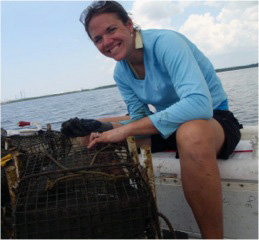
Ph.D. Candidate, University of South Alabama
Conference Travel Grant Type 2 (Coastal and Estuarine Research Federation)
Sedimentary organic matter source shifts due to land use change in a northern Gulf of Mexico estuarine system
“The Grand Bay estuary, including a National Estuarine Research Reserve (NERR), is a marsh and wet pine savanna wetland system located on the MS-AL border. The relatively pristine system has an east-west gradient of increasing land-use intensity in the adjacent watershed. To define the effects of land-use change on wetland condition, we measured changes in organic matter sources and content in sediments across this spatial gradient and through time. To link changes in sediment quality to urbanization, we applied a combination of biogeochemical and microbial indicators of wastewater exposure that are preserved in the sediment record. Pb-210 dated sediment cores from five locations, which dated at 200+ years BP, showed spore-forming bacterium Clostridium perfringens and stable isotopes of carbon and nitrogen that reflected site-specific differences in the rate and sources of organic matter inputs through time. Unexpectedly high concentrations of sewage-derived inputs were detected in the brackish marsh site as early as the 1850s. A diagenetic model was used to compare decay rates of the biomarkers among sites and may be useful to estimate the historical onset of processes such as eutrophication and the relative importance to estuarine function through time.
